The Yakuza series certainly has an interesting history. The first game was released in the U.S. a significant amount of time after it was released in Japan, and while the gameplay didn't change, the voices did. Having an all-English voice track coupled with expectations that this was going to be a Japanese version of Grand Theft Auto, and you have a game that sold pretty poorly. Yakuza 2 was released some time after that, and while people understood what they were getting into this time around and knew that it would have a Japanese voice cast, it was released at a time when people were paying less attention to the PlayStation 2. The budget price of the game at launch didn't help either, as it made the product seem like it would be inferior. Like its predecessor, it had relatively low sales as well. This is the polar opposite of Japan, where the game has been a huge hit for Sega and spawned a spin-off title. With the release of that spin-off as well as full-fledged sequel out of the way, Sega has decided to give the U.S. the third game in the series a year after its Japanese debut. Like its predecessors, Yakuza 3 is a pretty brilliant game but still has its fair share of criticisms.
Unlike most game series out there, the world of Yakuza 3 is heavily dependent on you having played the previous titles in the series. Without that knowledge and experience, the game loses its drama and impact when characters are first seen or certain actions take place. Fortunately, the developers understood this possible setback and made sure to include summaries of characters and previous events. The summaries are in video form and have the main character, Kazuma Kiriyu, narrating the events from his point of view. There are two separate summaries, one for each game in the series thus far. The summaries do a great job of introducing everyone or getting people caught up with what's happened if they haven't played the games in a while, but there are two quirks that you'll notice. The first is that the video plays in a very small box in the middle of the screen. Since none of the video shows off any gameplay and is entirely composed of the CG cut scenes, it's puzzling to see the scenes not be upscaled to play in the native resolution. The second quirk has to do with general playback. The overall summaries are broken into four parts, and while you can't choose which part of the story you want to see, you can choose to go back to quit playing them all once one part is over. Again, viewing the summaries is completely optional, but it is strange to see this get as little treatment as possible.
The plot of the game echoes that of some classic gangster films and, at times, previous entries in the series. A few years have passed since the events of Yakuza 2. Kazuma and his charge Haruka have left the seedy underbelly of Kamurocho and taken residence in the island of Okinawa, where Kazuma now runs an orphanage. With the exception of an eviction threat a few months ago, things have been peaceful. However, recent events have caused him some trouble. Daigo Doujima, the head of the organization Kazuma once headed, has been shot over a land deal that involved his orphanage. Shigeru Nakahara, head of the one of the families that has kept the peace on Okinawa for generations, seems to have been shot over that same deal. With the two attempted murders of his close friends and the threat of an all-out yakuza war about to take place, Kazuma has to re-enter the life he swore to leave years ago in order to maintain the peace in his former family and save his orphanage from being taken away.
Fans of the series already know this, but for those new to the world of Yakuza, this isn't simply a Japanese version of Grand Theft Auto. Some would argue that this is a more urban, grittier take on Shenmue, Sega's often-revered game series that was never properly finished. In reality, the best way to describe the game is that it is a brawling RPG. Like any Japanese RPG, you'll be spending a majority of your time wandering the environments looking for items and talking to people to get quests done and advance the story. Cut scenes are plentiful and end up taking a good chunk of time from the main quest. Even random battles happen just like an RPG. Once the fighting happens, it becomes a brawler just like any other. Everything is real-time and happens only with a set amount of combatants per fight. Most of the time, you'll be fighting groups of enemies by yourself, but you will have other AI characters help you and do a decent job at beating up thugs and picking up weapons. Combat is primarily hand-to-hand with a few finishing moves thrown in, but weapons also come into play and range from staffs and swords to traffic cones and guns. The end of each fight gives you items or cash, and experience is also gained and spent by the user on things like extra moves, health boosts and items to increase defense.
However, one thing that it does share with the Grand Theft Auto series is the plethora of side activities and missions that have nothing to do with the main story. The majority of the things you can do have some structure so you can't drive around Japan aimlessly or beat up any pedestrian just because you feel like it. A few of them deal with keeping a good relationship between Haruka and Kazuma. Taking her out with you on walks in the city and giving her items or food she wants accomplishes this, and boosting her trust level with you lets you gain items from her as well.
Other side missions include stopping con men from swindling money from you, helping the families in both Kamurocho and Okinawa complete patrols and collect from debtors, stopping a man from committing suicide, breaking up a smuggling ring, and helping tourists find souvenirs for their trip. A few of the missions are done for personal gain, like taking photos of extraordinary events and blogging about them in order to learn new fighting techniques.
Weaponry also plays into side missions as you search the cities for locker keys to gain items, some of which can be used to modify armor and weaponry. Taking lessons from a weapons master also gives you access to different weapon types and helps you use them more efficiently. One thing these all have in common is that they net you plenty of experience points and cash, both of which become valuable as you progress through the more difficult levels. If you finish all of those or just don't care to do them all, there are still a few activities designed to let you goof off, ranging from playing pool and darts to playing a few rounds of golf and singing karaoke.
Those who have followed the game's transition from a Japanese-only title to a U.S. title already know about the cuts made to the game during its journey. The cuts don't seem too minor, as you have four minigames, all of the hostess bar activities, and around 22 side missions removed from the U.S. version of the game, along with their related Trophies. Trophy hunters will still be able to get a Platinum on this game and the main story remains unaffected, but one of the main reasons for people to get this game, namely experiencing parts of Japanese culture we're only vaguely familiar with, has been diluted by the removal of those elements. The sting only hurts more when you realize that some activities, like hostess bars, are frequently mentioned by some street thugs. Even worse, some of the places you go to happen to be places in which missing activities take place. While there are people playing and attendants ready to serve you, approaching any of them doesn't give you the ability to start playing the games they offer. This doesn't suddenly make the game an empty experience once the credits roll, mind you, but it's disappointing to know that something is missing in a day and age when games seem to be getting equal content around the globe.
Aside from the aforementioned cuts, there's only one other element that could bother people, and that would be the cut scenes. Early on, the game features more cut scenes than actual gameplay. In fact, the entire first chapter only has you engage in two fights for tutorial purposes. You'll then spend a good chunk of the game watching scene after scene, both interactive and non-interactive, before you get into fights again or go exploring again. If you're going into the game prepared for story before gameplay, you'll be perfectly fine with this setup, as what you're given is some of the best work from the series yet. If you loathed games like Metal Gear Solid 4: Guns of the Patriots, where gameplay took a backseat to a more movie-like experience, you won't be too fond of the direction that Yakuza 3 has taken.
The controls, for the most part, work flawlessly. The camera never becomes an issue, as it stays behind the player most of the time but is intelligent enough to know when to move once a player changes directions. The same behavior is also seen during fights, where the camera rarely ends up being obscured by crowd members or objects and never gets caught up in the arena geometry. The fighting is fairly simple, with two attack buttons, a grab, a dodge, block and lock-on all in place with a pretty intuitive layout. Like a good fighting game, simplicity beguiles depth as there are plenty of combinations to be had if you press the right buttons and are in the right positions. If there's one complaint to be had, it would be with the lock-on system. Frankly, it doesn't work. While it is supposed to lock your focus on the selected opponent, you never get the sense that it functions at all since almost all of your attacks are capable of hitting multiple people in the vicinity, and you rely too much on body movement to indicate who you're fighting against. You rarely feel the need to have lock-on work, but it would be nice if it worked as well as it does in other titles.
The graphics aren't quite flawless but are still impressive despite being a year-old title. All of the important characters, both old and new, have received significant upgrades to their character models for this game. There's plenty of detail to be seen, with more intricate tattoos on their backs and more realistic skin textures, especially for their faces. The same can be said for their animations which look smoother and carry some nice touches, like you holding Haruka's hand while strolling through the Kamurocho district. Fight animations are also pretty smooth, considering how quickly you deliver each blow to your opponent. The brutality of each hit is well conveyed, especially when you get the heat gauge built up and start smacking opponents into walls and vending machines. The environments also show off quite a bit of detail, with the beaches of Okinawa looking very inviting and the lights or Kamurocho blinding you with their neon glow. Depending on the area of your fight, you even get crowds coming together to watch and cheer you on, a nice little touch that makes the environments feel alive. That lively feeling also translates well during exploration sequences, where you will run into very crowded areas and can bump into plenty of people if you choose to run instead of walk.
With all of this going for it, there are a few things that bring down the graphics a bit. The first is in the character detail. Yes, the main characters look great, but the same can't be said for a few of the supporting characters and bystanders. They don't look as bad as individual crowd members would look in a sports game, but they certainly give off a feeling that they were designed for the PS2 instead of PS3. Also, the issue of clipping is pretty bad here. It is accepted and even forgivable to have clipping during fights where long weapons, like poles, can clip through other objects. Having pedestrians clip through your hands or each other, though, is something entirely different. It only seems to occur frequently when there are large crowds, but it is enough to take you out of the game world for just a bit.
Like its predecessor, the sound in Yakuza 3 is excellent. The effects stand out quite well, as they all sound very distinct depending on your environment. Footsteps on the rooftops of building, for example, sound much different than footsteps on the city pavements, which are also different from footsteps made on sand. Punches and kicks all sound as brutal as they look, with some real weight added when you initiate a weapon attack. The voices are all in Japanese, with no option to change it to another language. The voices are delivered with the same quality as heard in your typical anime or live-action Japanese film, so unless you know the language natively, you might not be able to tell whether the performances are off. Music only plays during fights and cut scenes, but when it does, it sets off the right mood. Touching scenes still feel dramatic without going overboard, and action scenes really give you the feeling that you want to bust some heads. All of this is done in Dolby Digital and encoded with some real spatial separation that sounds better than most of the games that try to employ the sound codec. Unless you have to have an English audio track running, you'll find little to no flaws with the audio presented here.
If you can get over the fact that there was quite a bit of content removed from the North American version of the game, you'll find that Yakuza 3 is a very high-quality title. The graphics might suffer from a few hitches every now and then, but both the controls and sounds are high-caliber stuff. Most importantly, the story is good enough to outweigh the length of the cut scenes and compel you to the end, while the side activities will keep you very busy when you want to take a break from the drama. People who are looking for a great crime tale with a good amount of action will be happy once they put Yakuza 3 in their PS3s. Let's just hope that the next title will make it out of Japan intact.
Score: 8.8/10
More articles about Yakuza 3


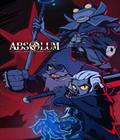
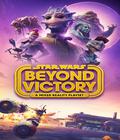
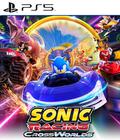
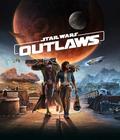

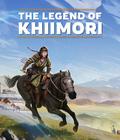



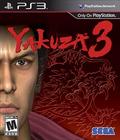 Yakuza 3 is the next cinematic chapter in the video game saga offering an authentic, gritty and often violent story situated two years after Yakuza 2, set in Ôsaka and Okinawa.
Yakuza 3 is the next cinematic chapter in the video game saga offering an authentic, gritty and often violent story situated two years after Yakuza 2, set in Ôsaka and Okinawa.





































